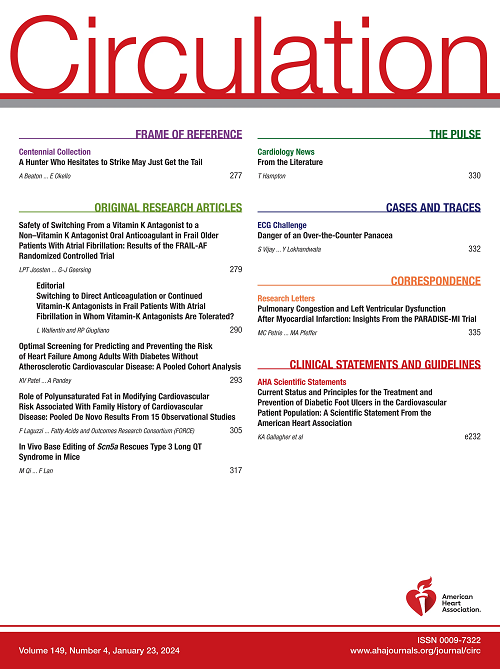Evidence Generation and Implementation of Transcatheter Interventions for Atrioventricular Valvular Heart Disease in Heart Failure: Current Status and Future Directions.
IF 35.5
1区 医学
Q1 CARDIAC & CARDIOVASCULAR SYSTEMS
引用次数: 0
Abstract
Mitral regurgitation and tricuspid regurgitation are the most common valvular heart diseases in patients with heart failure and have independent prognostic value. Transcatheter interventions are now available for the treatment of valvular heart disease, and their efficacy and safety have been tested in randomized controlled trials. However, evidence is still limited and sometimes inconclusive because several aspects of these trials limit their interpretation or consistency. These include heterogeneity in the pathogenesis and clinical characteristics of patients, the dynamic nature of secondary atrioventricular valve disease severity, the role of heart failure medications and devices, dependency on procedural results and operators' skills, smaller number of patients enrolled and the power to detect differences in trials, and limitations to use patients' reported outcomes with unblinded study protocols. These specific aspects of trials in patients with atrioventricular valve disease are reviewed in this article with a focus on possible solutions to generate further evidence for the efficacy and safety for transcatheter treatments of atrioventricular valve disease in patients with heart failure.心衰患者房室瓣膜性心脏病经导管介入治疗的证据生成和实施:现状和未来方向
二尖瓣反流和三尖瓣反流是心力衰竭患者最常见的瓣膜病,具有独立的预后价值。经导管介入现在可用于治疗瓣膜性心脏病,其有效性和安全性已在随机对照试验中得到验证。然而,证据仍然有限,有时是不确定的,因为这些试验的几个方面限制了它们的解释或一致性。这些因素包括患者发病机制和临床特征的异质性,继发性房室瓣膜疾病严重程度的动态性质,心力衰竭药物和设备的作用,对程序结果和操作人员技能的依赖性,入组患者数量较少,试验中检测差异的能力,以及在非盲法研究方案中使用患者报告结果的局限性。本文回顾了房室瓣膜疾病患者试验的这些具体方面,重点讨论了可能的解决方案,以进一步证明经导管治疗心力衰竭患者房室瓣膜疾病的有效性和安全性。
本文章由计算机程序翻译,如有差异,请以英文原文为准。
求助全文
约1分钟内获得全文
求助全文
来源期刊

Circulation
医学-外周血管病
CiteScore
45.70
自引率
2.10%
发文量
1473
审稿时长
2 months
期刊介绍:
Circulation is a platform that publishes a diverse range of content related to cardiovascular health and disease. This includes original research manuscripts, review articles, and other contributions spanning observational studies, clinical trials, epidemiology, health services, outcomes studies, and advancements in basic and translational research. The journal serves as a vital resource for professionals and researchers in the field of cardiovascular health, providing a comprehensive platform for disseminating knowledge and fostering advancements in the understanding and management of cardiovascular issues.
 求助内容:
求助内容: 应助结果提醒方式:
应助结果提醒方式:


